If you are standing on the hill and can see the lighthouse off in the distance, it means it is surely going to rain. If you are standing on the hill and you cannot see the lighthouse … then it is already raining. And that is how you determine what the weather will be on any given day in Scotland. If you have an aversion to getting wet, Scotland might not be the right destination for you.
So far this morning, I have walked about two miles on an easy, but muddy trail in what is called a ‘light highland mist’, which, as any outlander knows, means just slightly less than a downpour. But, as we all know, there is no such thing as bad weather, just the wrong clothes.
I know Scotland as well as my own native country, and am unfazed by rain. The dark skies suit me fine — the drenched, bright green hills, the smell of the fish, the water-weed, the wet sheep. I delight in the rainy songs of the kittiwakes and gulls that glide around the blustery sky — they don’t even know what weather is.
Today I follow an unmarked path on the brae up behind and beyond the little seaside town of Oban. My guide is a small folded booklet of local ‘leisurely rambles’ — easy strolls for those of a ‘certain’ age who are, shall we say, less than athletic. Little books of this kind are available in any local office of tourism, and as a solo woman traveler of that certain age and fitness level, I always pick them up. The featured short walks are not that remote and are mapped out step-by-step, like going on a nature scavenger hunt. Today it’s a simple four-mile loop that goes something like this:
“Turn left onto Glencruitten Road on the south end of town, and go up the hill until you come to a sports field. Turn left and follow along beside the tracks until you pass three railway cottages. Continue through the gate, and stay on the path for about two miles. When you come to a stand of trees on your left, you will find a gate. Enter the gate, cross the long pasture and exit at the bottom of the hill. Continue along the fence one mile to arrive back in the town center.”
Lovely plan! The only problem is, on the gate there is a sign:
I sputter and sigh. Now, we know that if the bull is in the pasture with his cows, we are safe, he won’t trouble us. But if the bull is in the field alone, it is best not to enter. You say to yourself, I don’t actually see a bull, but he might be behind those trees. Is he with his harem today? Could I outrun a bull? Maybe there is no bull but the land owner just wants to discourage people from walking across his property?
So, as it sometimes happens on your walks in Scotland, you have had a nice little ramble, and now you have three options:
• turn around and retrace the way you have come - three miles
• continue walking north on the trail for four more miles to the next town and maybe take a bus back
• stay with the original plan and risk sudden acquaintance with a large, territorial bovine
It happens, and it’s often caused by that one little hiccup — you need to cross “private property” to get to where you are going.
Scotland has a very liberal ‘free access’ law — a law that allows the general public to cross through privately owned property ( a pasture, in this instance) to get to their destination. It is a legal right, but that doesn’t mean private land owners are always eager to comply. They often attempt to thwart passage across their land. They may have good reason.
The Scottish “Freedom to Roam” Act gives the general public the right to access mountains, moorlands, forests, grasslands, paths, pastures, waterways, the sea coast – whether they are owned privately or publicly. Visitors have the right to hike, ride horses, bicycle, camp and picnic any time, if they exercise that right responsibly. They are expected to respect the places they pass through and leave everything exactly as they find it.
According to the law, land owners must allow access except in the case of visitors who are doing something against the law such as disturbing the peace, poaching, allowing a dog to worry livestock, leaving trash and polluting water. Visitors are not to disturb protected wild birds, animals and plants, hunt, shoot, fish, or use any form of motorized vehicle for recreation or passage. And if the gate is closed, then close it when you pass through. If it is open, leave it open!
Some property owners, however, do not want to deal with the constant stream of walkers, period, and do find ways to hinder access without precisely breaking the law – such as posting warning signs about bulls in pastures – signs which may or may not be true, but that tend to discourage entering a gate or following a track. I share here three scenarios you might experience:
You are walking along a semi-rural route through Bannockburn, south of Stirling, and right where you are supposed to access a path, you find the land-owner has piled years worth of brush, tree branches and garden trimmings in the way. This pile completely fills the entry to the path, from one stone wall to the other stone wall, in effect, making passage impossible. But, where would you complain? And why would you? You are on holiday! A minor change of plans is in order, that is all.
You are walking above the small port town of Tobermory on the Isle of Mull, a lovely stroll high above the sea. Following the local walkers’ guide, you turn left to cross a large space of high grass to connect with a trail on the other side. A sign is posted “BEWARE OF SNAKES.” Snakes? Scotland has snakes? You have never seen a snake in Scotland, but are you going to walk through knee-high grasses, ignoring the warning? That field might be a seething nest of Indiana Jones quantities of venomous adders. So you simply turn around and look for an alternate way back to the village. Snakes or no snakes, you had a legal right to cross that field. But you accept that the landowner obviously does not want you on his property and knocking on his door probably wouldn’t change his mind.
On a lowland walk out of Melrose, your little rambling group is stopped mid-hike upon finding that the landowner is using the direct path to the Eildon Hills as a midden! All the muck from the barn and stable is dumped here at the trail head, creating a small mountain of cow and horse dung, with no access around it, as the surrounding land is very wet bog. He could have piled the poop anywhere, but he chose the middle of the path. Once again, foiled, you back up and find your way around both the midden and the bog, and eventually arrive for your dinner only an hour late.
Visitors rarely speak out, but local residents do seek action and can be quite successful. A few years ago a man purchased a stretch of ocean front property on Bay MacNeil in Ardnamurchan. He built a caravan site (RV park) and fenced it in securely, thereby blocking the public from descending the one and only path down to the isolated bay and preventing them from taking the long shore walk from Portuairk to the Ardnamurchan Lighthouse. In this case, it only took one frustrated and persistent local hero, my friend David, to raise a ruckus at the local Highland Council. As a consequence of his eloquent, compelling protest, a new footpath was soon built that gave access to the bay and to the long walk down the shore to the Lighthouse.
To sum up, let me say that Scotland is, as you know, home to some of the most impressive, easily accessible networks of hiking trails in the world. There are 32 posted long-distance walking routes, as well as 280 mountains over 3,000 feet high to climb. You will find hundreds of short trails – from creekside village footpaths, to coastal walks, to sign-posted forest trails, to epic climbs and wilderness treks. There is something for the strongest of climbers and for the elderly women out for a stroll, and everyone in between. And such breathtaking, awe-inspiring landscape it is, friends! Truly magnificent scenery on all sides.
Understand that I share these Scottish experiences, not to complain. I recall these occurrences simply as a reminder that wherever we choose to go in the world, our day rarely plays out the way we plan it - even in Scotland, the most rational, predictable, easy-going, warm and friendly place I have ever explored. Of all the places I have traveled, Scotland, remains my favorite destination. I have returned there eleven times in my long life and would go again tomorrow if I could.
The one sure thing about travel is that there is rarely a sure thing. And that is, of course, why we go, isn’t it? If we wanted predictability we would as well stay at home!
Here are a couple of friendly websites that describe opportunities for leisure walks in Scotland, specifically for families and older folks

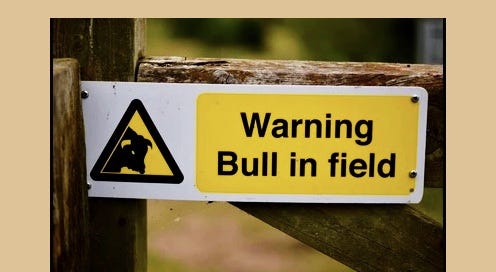



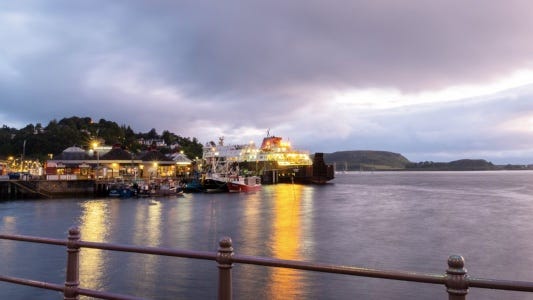
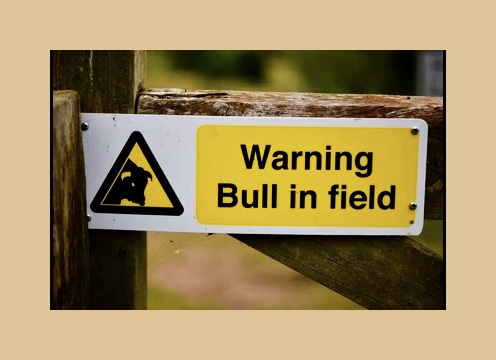
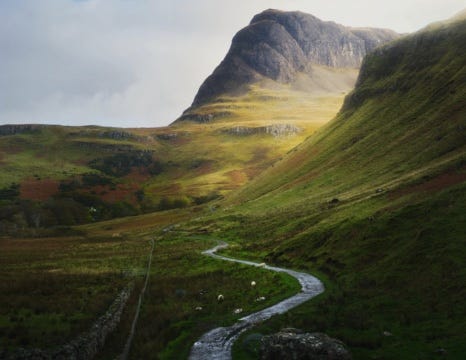
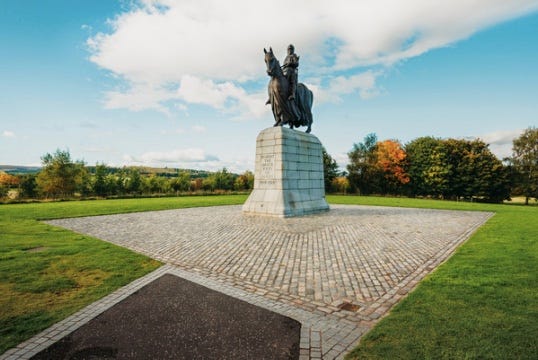

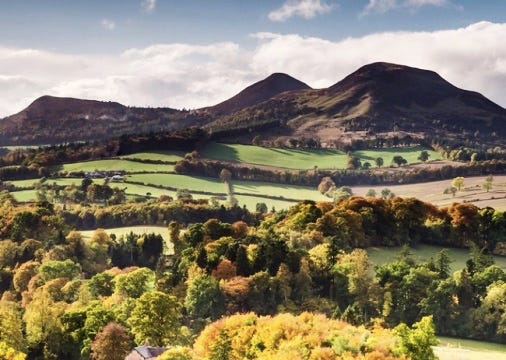
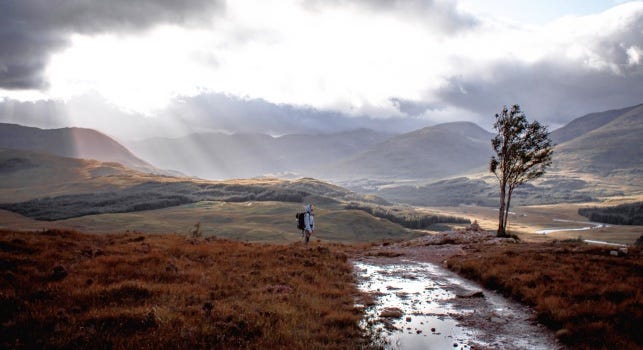
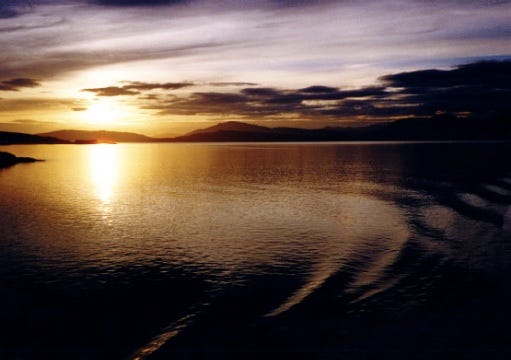
I'm not a traveler, but if given opportunity, Scotland would be high on the list...right after the Victoria and Albert Museum in England. Small towns and glorious fields sound like home. ONce tried to shoo a bull back to his own farm next door from the field he didn't belong in. Farmer later told me never do that. Bulls take offense and make hash of shooers. This one did shoo past his own barn to the horizon. I did keep him off the highway so was pleased with myself anyway. Apparently it is legal here to shoot renegade livestock and put the meat in your own freezer, as payment for not allowing the critter to attack traffic and make lawsuits. Won't do that either. I'll just phone the farmer now I've got his number. Got my sunday shoes all muddy for my trouble. A "soft morning" you say.... pleasant with the right clothes. )))
It was great taking the trip with you even if we did take detours and ended up exactly where we started from.